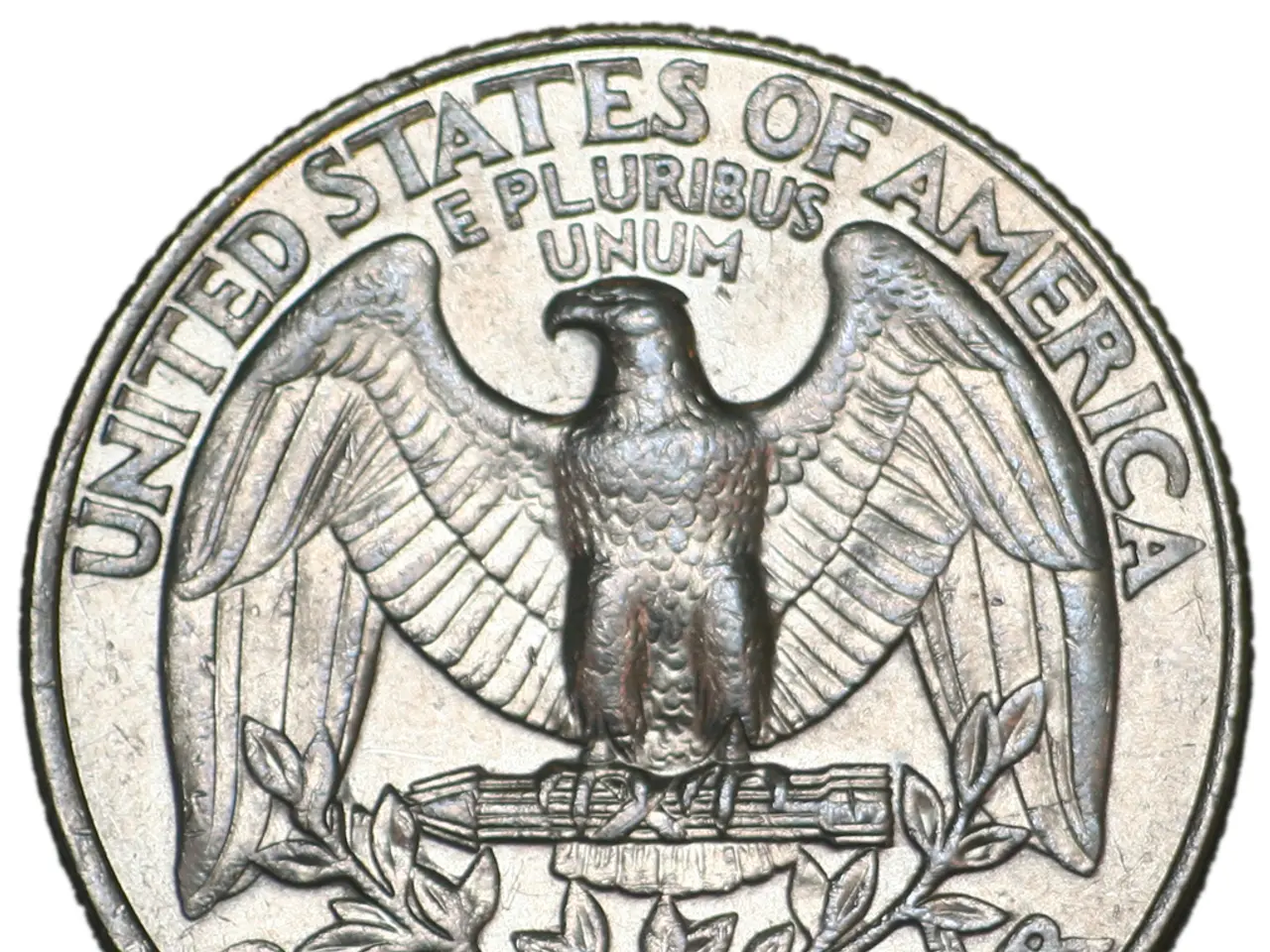Cryptocurrency market is thriving, with Washington's influence playing a significant role in the current surge.
Expanding Cryptocurrency in Retirement Plans: A New Era for 401(k) Investments
In a groundbreaking move, President Donald J. Trump has signed an executive order on August 7, 2025, aiming to broaden the investment options available in 401(k) plans and other defined-contribution plans governed by ERISA. The order encourages the inclusion of alternative assets such as digital currencies, private equity, real estate, and private credit [1][2][4][5].
This decision follows the DOL's 2022 guidance that urged plan fiduciaries to exercise "extreme care" before incorporating cryptocurrency investment options due to concerns about volatility, fraud, custody risks, and legal uncertainty [1][4]. However, on May 28, 2025, the DOL rescinded that guidance, replacing the "extreme care" standard with a "facts and circumstances" standard, allowing fiduciaries to assess crypto investments based on prudent, context-specific evaluation [1][4].
The executive order explicitly refers to digital assets held via actively managed vehicles as an alternative asset class and calls on agencies to update regulatory frameworks within 180 days (by February 3, 2026) [2][4][5]. This move could potentially broaden the investment menu available to 401(k) participants, allowing them access to a wider array of alternative assets, including cryptocurrencies like Bitcoin and Ethereum [3][5].
The order recognizes challenges with offering direct crypto investments but points towards asset allocation funds (e.g., target date or lifecycle funds) containing alternative assets as a likely practical approach for incorporation in retirement plans [2]. By promoting the inclusion of alternative assets, the order aims to enhance diversification opportunities and improve risk-adjusted returns, potentially supporting stronger retirement security for investors [5].
The step also addresses concerns of "regulatory overreach" and litigation risks that had limited access to alternative assets previously, aiming to remove barriers and clarify fiduciary responsibilities for plan sponsors [2].
Meanwhile, the cryptocurrency market continues to soar. Bitcoin has eclipsed record highs, and the BlackRock bitcoin ETF, launched in January 2024, is up 137% since its launch. JPMorgan Chase is planning to be involved in stablecoins and has announced a partnership with Coinbase. Starting this fall, Chase customers will be able to fund their Coinbase accounts to purchase crypto with their Chase credit cards [6].
Google is part of a multibillion-dollar deal with a bitcoin mining company called TeraWulf, helping drive enthusiasm about the industry. Even the Trump family-tied World Liberty Financial has issued its own stablecoin. However, concerns about consumer protections have been raised by Amanda Fischer, policy director at Better Markets, regarding the GENIUS Act [7].
As the cryptocurrency market continues to grow and gain mainstream acceptance, the executive order and accompanying DOL guidance changes mark a significant shift toward more open inclusion of digital assets and other alternative investments in 401(k) plans. They reestablish a fiduciary assessment framework based on prudence and context rather than categorical caution, potentially expanding investment choices and diversification options for retirement savers [1][2][4][5].
[1] The White House. (2025). Executive Order on Encouraging Investment in America. Retrieved from https://www.whitehouse.gov/briefing-room/presidential-actions/2025/08/07/executive-order-on-encouraging-investment-in-america/ [2] Department of Labor. (2025). Fact Sheet: President Trump's Executive Order on Encouraging Investment in America. Retrieved from https://www.dol.gov/agencies/ebsa/about-ebsa/our-activities/resource-center/faqs/executive-order-encouraging-investment-america [3] CNBC. (2025). Trump's executive order could open doors for Bitcoin and other cryptocurrencies in 401(k) plans. Retrieved from https://www.cnbc.com/2025/08/09/trumps-executive-order-could-open-doors-for-bitcoin-and-other-cryptocurrencies-in-401k-plans.html [4] InvestmentNews. (2025). DOL rescinds 2022 guidance on cryptocurrency in 401(k) plans. Retrieved from https://www.investmentnews.com/news/dol-rescinds-2022-guidance-on-cryptocurrency-in-401k-plans-173554 [5] Forbes. (2025). Trump's Executive Order Could Expand Crypto Investments In 401(k) Plans. Retrieved from https://www.forbes.com/sites/chuckjaffe/2025/08/10/trumps-executive-order-could-expand-crypto-investments-in-401k-plans/?sh=77e6528c3152 [6] Coinbase. (2025). Chase Customers Can Now Fund Their Coinbase Accounts. Retrieved from https://blog.coinbase.com/chase-customers-can-now-fund-their-coinbase-accounts-4b2530d8a525 [7] Better Markets. (2025). Better Markets Statement on the GENIUS Act. Retrieved from https://www.bettermarkets.com/press/better-markets-statement-on-the-genius-act/
In response to the executive order, 401(k) plans may consider incorporating cryptocurrency investments like Bitcoin and Ethereum, representing a shift towards more open inclusion of digital assets. This move by the government could potentially broaden the investment menu available to plan participants, enhancing diversification opportunities and improving risk-adjusted returns.
The decision to integrate technology-driven assets such as cryptocurrencies within 401(k) plans may lead to a significant impact on retirement security due to increased investment choices and potential growth opportunities. However, it is essential that consumer protections are considered to address any concerns raised by financial advocacy groups.



